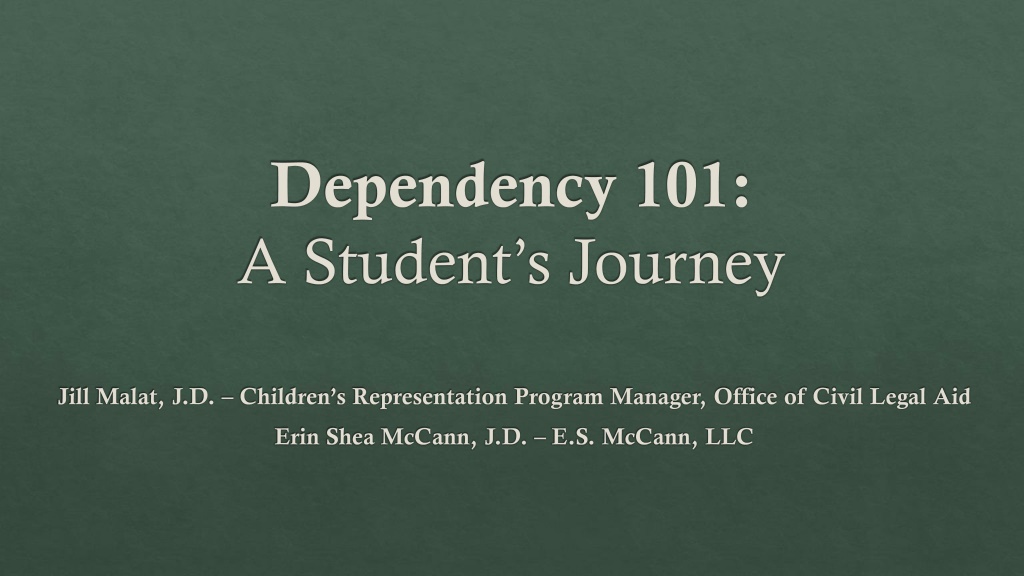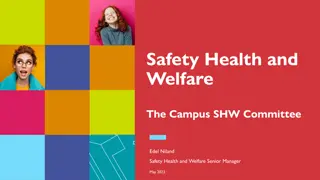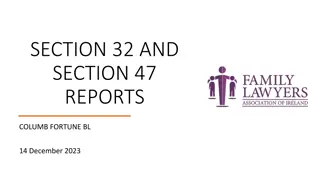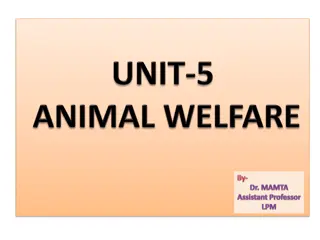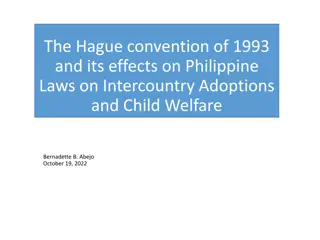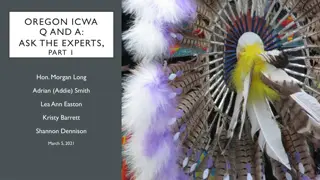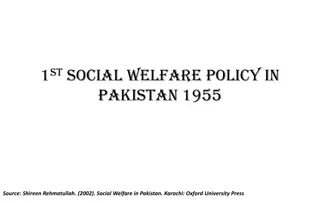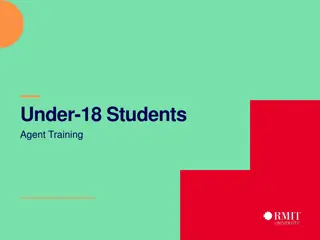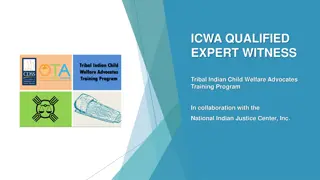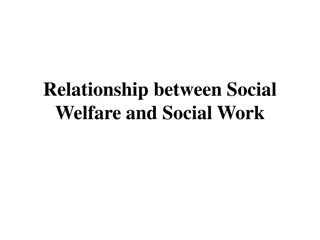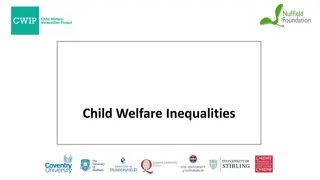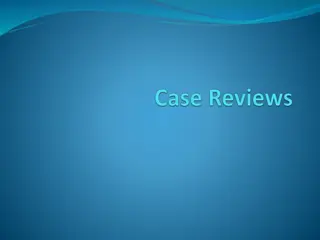Child Welfare Systems
Delve into the complexities of child welfare systems, exploring acronyms, legal jargon, and key statistics. Uncover racial disparities, foster care dynamics, and data trends affecting children. Gain insights into the challenges and numbers shaping the landscape of child welfare.
Download Presentation

Please find below an Image/Link to download the presentation.
The content on the website is provided AS IS for your information and personal use only. It may not be sold, licensed, or shared on other websites without obtaining consent from the author.If you encounter any issues during the download, it is possible that the publisher has removed the file from their server.
You are allowed to download the files provided on this website for personal or commercial use, subject to the condition that they are used lawfully. All files are the property of their respective owners.
The content on the website is provided AS IS for your information and personal use only. It may not be sold, licensed, or shared on other websites without obtaining consent from the author.
E N D
Presentation Transcript
Dependency 101: A Student s Journey Jill Malat, J.D. Children s Representation Program Manager, Office of Civil Legal Aid Erin Shea McCann, J.D. E.S. McCann, LLC
Introductions Who s in the room?
Acronyms and legal jargon and abbreviations, oh my! DSHS Child s Attorney CPS Attorney General / AG CFWS CASA / GAL Shelter Care Fact Finding AND MORE!
Acronyms and legal jargon and abbreviations, oh my! In-home Dependency FTDM Out-of-home Care Independent Living Program (ILP) Relative / Kinship Care Extended Foster Care Permanency Termination (TPR) AND MORE!
POC Child Well-being Data Portal pocdata.org Who experiences? Rates by race / ethnicity Who reported? Siblings placed together What types of CA/N? Data by county
The Big Picture: By the Numbers 48,218 CPS investigations (1/1/17) ** far more referrals 30,046 neglect 13,910 physical abuse 2,129 sexual abuse 9,061 children in out-of-home care (1/1/18) 43% are 0-4yo 26% are 5-9yo 19% are 10-14yo 12% are 15-17yo
Racial Disproportionality Permeates all stages the child welfare system Disparity index for children of color All CPS intakes = 5.29 CPS screened in intakes = 5.72 Removals within 12 months of intake = 8.24 In care for more than 2 years = 5.75 Moved twice or more during first 12 months of placement = 6.3
Other Numbers? # of licensed foster homes ~ 6,500 foster homes Est. CA homes: ~ 4,900 (75%) Est. CPA homes: ~ 1,600 (25%) Not all licensed home are active # in Extended Foster Care (as of April 2018) 641 young people 44% age 18 / 29% age 19 / 27% age 20 465 of those young people are in a supervised independent living situation 176 are in a foster care setting
Other Numbers? 2016 Office of Homeless Youth Report Nearly 13,000 young people (under 25) in WA experience homelessness over the course of a year Nearly 6,000 unaccompanied youth in WA public K-12 schools experience homelessness
The Systems DSHS DSHS =Dept. of Social & Health Services 8 Administrations w/one Secretary serving the entire DSHS Aging & L-T Care; Behavioral Health; Developmental Disabilities; Economic Svcs.; Financial Svcs.; Rehabilitation; Services & Enterprise Support CA = Children s Administration, which is led by an Asst. Sec. who reports to the Sec. of DSHS CPS = Child Protective Services Investigation CFWS = Child & Family Welfare Services Handoff from investigation to dependency
The Systems DCYF New DCYF = Department of Children, Youth & Families CA & Dept. of Early Learning move to DCYF on 7/1/18 Juvenile Justice (JRA) on 7/1/19 Sec. (Executive Cabinet member) reporting to Governor on children, youth & family issues Attend Laurie Lippold s 3:00 workshop for more info about DCYF & the 2018 legislative session!
The People Young people Child s attorney (maybe?) CPS investigator Family of origin / bio family GAL or CASA (volunteer) CFWS social worker CASA attorney (maybe?) Educational advocate Relatives / kin, suitable others Attorney General Social supports for young people Judge / Commissioner Licensed foster parents Takeaway: young people involved with child welfare have had a LOT of people in / out of their life / their case
The Life of a Case (generally!) Allegation Screening decision Investigation CPS CPS - FAR FRS CPS Dependency petition filed Shelter care hearing Dependency fact finding Determination of dependency In-home services (6 mos.) Out-of-home care Goal = reunification CFWS
the Life of a Case (generally!) Permanency / concurrent planning Review hearings every 6 mos Trial return home Dismiss or move for TPR CFWS Termination petition filed TPR trial Possibility of appeal Legally free 3rdparty custody Adoption TPR
the Life of a Case (generally!) Permanency Age out Opt-in to Extended Foster Care Reinstatement of Parental Rights Post- TPR Dependent youth can voluntarily stay in FC after 18 to continue receiving housing & support until age 21 Optional program, but some eligibility requirements Expanded this year so that youth can leave & come back at any point after their 18thbirthday EFC
Reflections This is LONG and complex process moving timelines & targets Young people may move foster placements MANY times Shortage of foster homes Especially challenging to find FHs for older youth With every placement change = educational disruption
Reflections Social worker turnover impacts youth Youth with complex needs mental health; substance abuse; developmental disability face even more challenges in a resource-drained system Others?
Learn more A System in Crisis (link) Partnership b/w KCTS 9, Crosscut, InvestigateWest & Documentary Producer Bryan Tucker CA s independence.wa.gov (link) Jobs, education, housing, budget, health, self-advocacy, LGBTQ Eligibility! Partners for Our Children Data Portal DCYF alerts for updates
Thank you! jill.malat@ocla.wa.gov erin@esmccann.com
